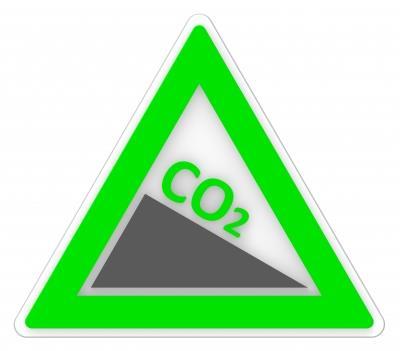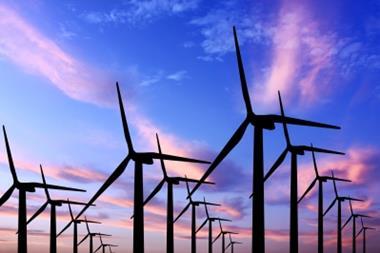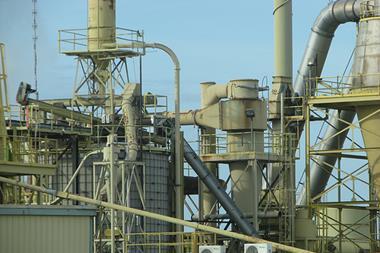With punishment taxes on the horizon, companies are discovering the commercial benefits of cutting carbon dioxide emissions. Chief risk officer Carl Leeman gives a snapshot of what his firm is doing in this space

As alarmed multilateral and national authorities move to a co-ordinated attack on CO2 emissions around the world, Belgian-based logistics group Katoen Natie is one company that is not waiting for what many predict will be increasingly tough penalties for polluting the atmosphere.
The company already derives some 25% of its domestic energy needs from no less than three acres of solar panels. Under the Belgian system, its output is stored on the national grid and drawn on as required – but now management wants to take the company’s green credentials a step further by tapping the benefits of wind power.
However, in an echo of other attempts to install energy-efficient infrastructure that have become mired in disputes, applications for building permits for a dozen windmills have stalled. “We filed the permits five years ago for several locations but they have run into local opposition,” explains a frustrated Carl Leeman, Katoen Natie’s chief risk manager. “If we could install the windmills, the company would derive 45% of our power needs from solar and wind.”
What is even more perplexing is that the delays are occurring in spite of increasingly dire official predictions of nationwide power shortages in the far from unlikely event that Belgium suffers a severe winter. The country, which already has to import energy from the Netherlands and other EU countries to cover gaps in the national grid, has already warned of rolling power cuts across industry and communities.
Disaster warning
If the world is to avoid climatic disaster, then by general consensus, global industry has to take steps quickly to reduce carbon dioxide emissions. Indeed, consultant PwC has warned: “Global economies need to cut their energy-related carbon emissions for every dollar of GDP by 6.2% every year from now to 2100.” Currently, the world is achieving less than a fifth of that rate.
In six years, global carbon intensity – a measure of greenhouse gas emissions per dollar of gross domestic product – has been reduced by a paltry 1.2 %. PwC analysts say this represents a fraction of what is required if global warming is to be kept to 2°C, the upper limit of the scientific consensus about avoiding environmental mayhem.
The threat has come up fast. As the International Monetary Fund (IMF) points out, in the pursuit of ever-rising economic development, the increase in the use of energy has reached historically high levels. In the past quarter of a century, energy use has soared by 50%, triggering rapid increases in CO2 emissions.
Moreover, energy consumption is accelerating. About a quarter of the current energy demand originated in the past decade. The IMF points out that, since 2000, all of the net growth has occurred in non-Organisation for Economic Co-operation and Development countries, with China accounting for more than half. Having been blindsided by the unprecedented surge in demand for power, forecasters now suggest global energy demand will rise by about 20% in the next 15 years.
Naming the culprits
As far as possible, this demand should be met by non-polluting sources, according to the Global Commission on the Economy and Climate, launched in September 2013 by the UK, Sweden, South Korea, Norway, Indonesia, Ethiopia and Colombia to analyse the risks and benefits of climate action. Its report one year on also prefigures hefty taxes to reverse a catastrophic trend. According to the commission, the five main culprits in terms of energy-related CO2 emissions are China (26.8%), the US (16.9%), Russia (5.5%), India (5.3%) and Japan (3.6%).
In late 2014, the situation seemed to be finely balanced, with some countries substantially beating targets for reducing emissions while others were lagging behind. According to PwC, Australia clocked a ‘decarbonisation rate’ of 7.2% last year to head the league table, while the UK, Italy and (of all countries) China posted encouraging rates of 4%-5%. On the wrong side of the ledger, France, the US, India, Germany and Brazil increased their levels of carbon intensity.
Bottom line
As Hamburg port operator HHLA has shown recently, investing in infrastructure that reduces CO2 emissions even indirectly can lead to reputational gains as well as bottom line savings. The group recently installed its second dirty water processing unit that, while saving nine-tenths of the fresh water previously used to clean containers, also greatly reduces truck movements between the port and recycling sites.
The way the situation is developing, HHLA will be able to cite lower taxes as an additional benefit. In September, the IMF released a long-awaited paper that foreshadows much harsher fiscal penalties for polluters – a move that would reverse the trend of subsidising the use of fossil fuels. By the IMF’s estimates, support for the fossil fuel-based industry amounts to about $2trn (€1.6trn) a year at present. This must change, warns the IMF. “Stabilising atmospheric concentrations of greenhouse gases will require a radical transformation of the global energy system over coming decades,” it says bluntly. In this, fiscal instruments such as carbon taxes will probably be the prime tool.
Time is clearly running out. As Leo Johnson, PwC’s head of sustainability and climate change, points out: “After a decade of carbon inertia, we are way behind. We now need to decarbonise at more than five times our current rate to avoid 2°C.”
However, he’s no Jeremiah. The biggest emerging economies have “woken up to the business logic of green growth” and are on the case, he says. Indeed, they are decarbonising faster than the G7 for the first time on record.
At the same time, renewable energy is gaining ground rapidly. “As they approach cost parity, the stage is set for a policy framework that shifts subsidies away from fossil fuels and accelerates the roll-out of renewable,” Johnson predicts.
Cleaner, sooner
In the war against CO2 emissions, logistics companies such as Katoen Natie are in the vanguard. With a fleet of some 500 vehicles, including 340 trucks, the Belgian group is keen to switch to all-electric propulsion as soon as the technology makes it possible. In the meantime, it monitors CO2 emissions on constantly and routinely exchanges its trucks for lower-polluting ones, partly because of pressure from customers. “Our clients take a close interest in our CO2 emissions”, explains Leeman. (Katoen Natie is currently switching most of its fleet from Scania to Volvo.)
Through a variety of recycling projects, French waste management and resources giant Veolia is also taking action. “Our conversion of waste to energy accounts for most of our avoided CO2 emissions,” explains Lenny B Conil, Hong Kong-based manager of risk and business continuity. “We estimate that about 24 million metric tonnes of CO2-equivalent emissions were avoided through these processes last year.” The company, which is already managing some 500 biomass-powered plants around the world, is building another in Canada that will, it claims, “prevent the discharge of 95,000 metric tonnes of CO2 into the atmosphere”. That’s equivalent to emissions from 45,000 motor vehicles.
Hinting at a greener future, last year the energy giant commissioned an own-designed boiler in a community in the Auvergne, France, powered by the leftovers of corncobs. Since they have twice the calorific value of wood, burning the cobs leads to a considerable saving in CO2 emissions, compared to alternative units. As Veolia says: “Waste is energy.” SR
A taxing calculation
A carbon tax seems the most likely price that emitters will have to pay, but how much will it cost?
This is a complex subject, but no country has yet drawn up a definite estimate that would apply on a per-company basis. But a few clues show how a carbon tax might operate, based on “nationally efficient CO2 prices” – that is, a price per tonne that would “reflect domestic externality benefits”, as the Global Commission on the Economy and Climate puts it.
A rough explanation of such benefits is that they would embrace all of the various public finance burdens caused by greenhouse gases minus subsidies for the fossil fuel industry. Into this calculation would be added the cost of pollution-related deaths and other health issues, especially from coal, road congestion, existing fuel taxes and subsidies and anything else that results from poisoning of the atmosphere.
There is a wide variation in what “nationally efficient CO2 prices” are –but, taking everything into account, the IMF and the Global Commission on the Economy and Climate believe they are running at about $57.50 a tonne. They say this is sufficiently high to justify immediate action without waiting for a globally co-ordinated carbon tax.
In other words, governments in the biggest emitting economies would book a net gain from moving to carbon taxation. The good news is that any move to such a regime would likely result in the lowering of other taxes, for example, in the health budget.
But obviously, the lowest-emitting companies would have the lowest tax bill.




















No comments yet